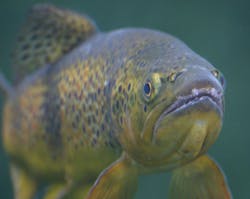Hunting and fishing organizations participated in the White House Water Summit on March 22, where 150 diverse stakeholders highlighted a shared commitment to building a sustainable water future.
“We’re pleased that the administration is focusing its attention on how we use and conserve water,” says Scott Gudes, vice president of government affairs at the American Sportfishing Assn. “We need to find ways to work together and find innovative solutions to the water issues that impact not just humans, but our fish and wildlife, as well.”
Gudes points to Chinook salmon in California as one example of an iconic fish species for recreational and commercial anglers that is being stressed by persistent drought conditions. But strong dialogue between federal agencies and stakeholders could help plan for future water crises.
As participants in the summit, the Theodore Roosevelt Conservation Partnership announced that its petition recognizing serious risks to the country’s water supply—including rising temperatures, falling water levels and more demand than ever before—has been signed by more than 800 sportsmen. And these Americans are calling for action from federal officials.
“The message from hunters and anglers across the country is that we need to create flexible water systems that can better weather the next drought or flood,” says Jimmy Hague, director of the Center for Water Resources with the TRCP. “We also need to promote healthy fish and wildlife habitat while providing water to cities and farms.”
President Obama has issued a Presidential Memorandum and supporting Action Plan on building national capabilities for long-term drought resilience. “This move to increase coordination of federal resources will better protect vital water supplies, especially in places like the drought-stricken Colorado River,” adds Hague.
Sportsmen have been setting the agenda on drought since last summer, when ASA and the TRCP joined B.A.S.S., Berkley Conservation Institute, The Nature Conservancy and Trout Unlimited in delivering recommendations for federal actions to make our country’s waterways more drought resilient. These recommendations include a call for greater coordination between federal agencies and more investment in water conservation projects and voluntary water-sharing agreements—both of which the administration has made moves to address.
“Every antiquated water infrastructure problem is an opportunity to create new benefits for river health and drought resiliency,” says Laura Ziemer, senior counsel and water policy advisor for Trout Unlimited. “This is why we are calling for federal grant criteria to require that water infrastructure or supply projects selected for federal funding also create benefits for fish, wildlife and recreation through improved instream flows, while improving water supplies for agriculture and cities.”
Source: Theodore Roosevelt Conservation Partnership


